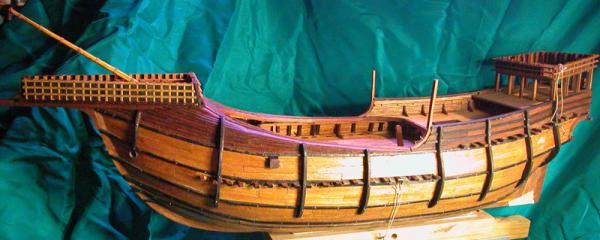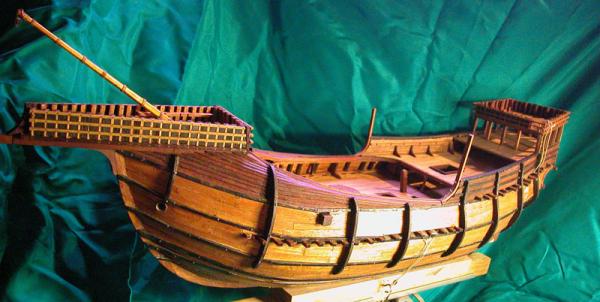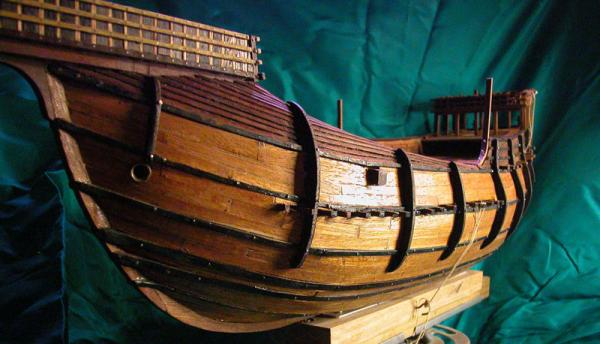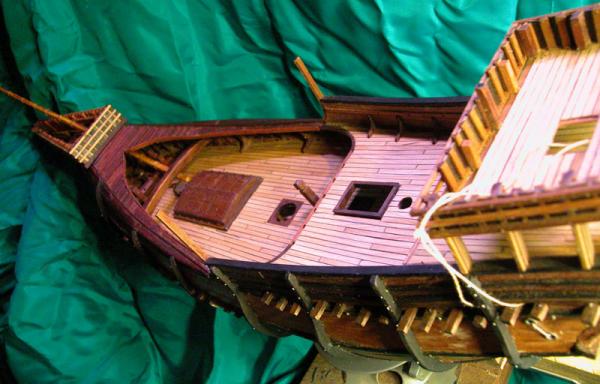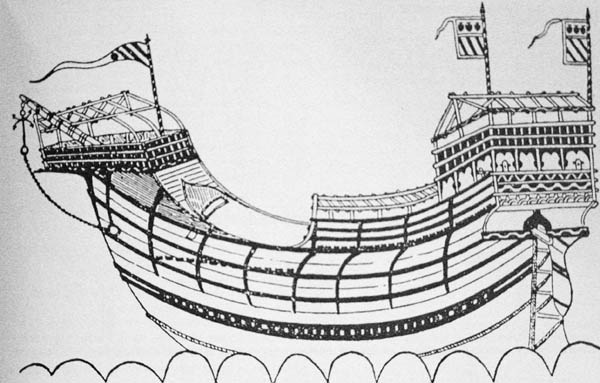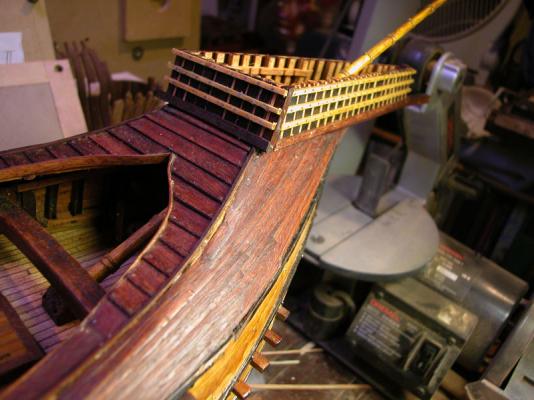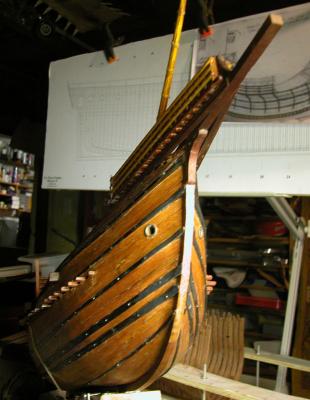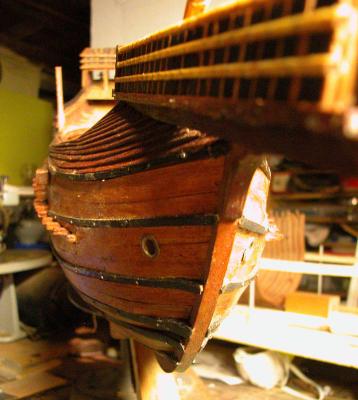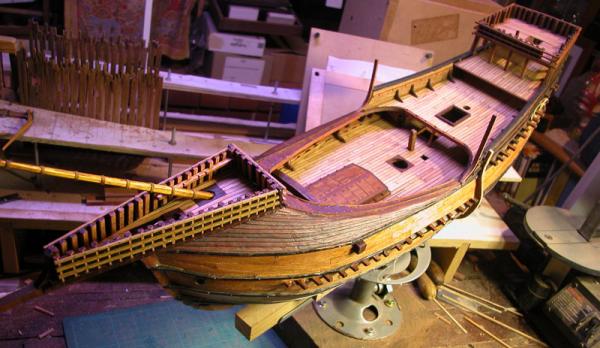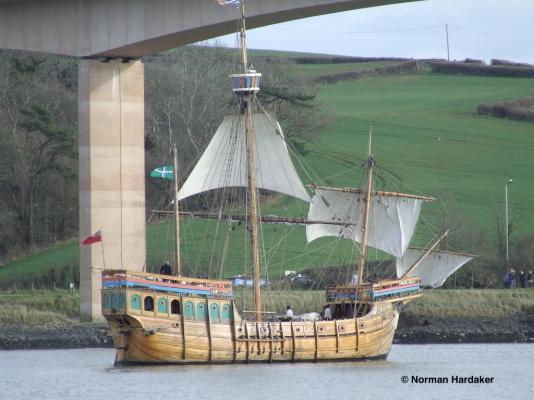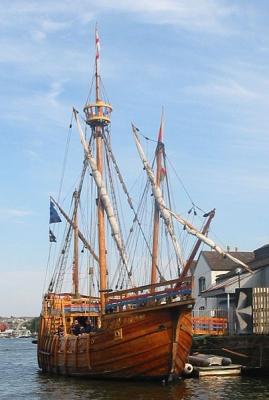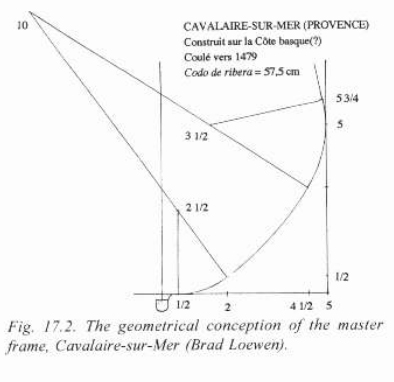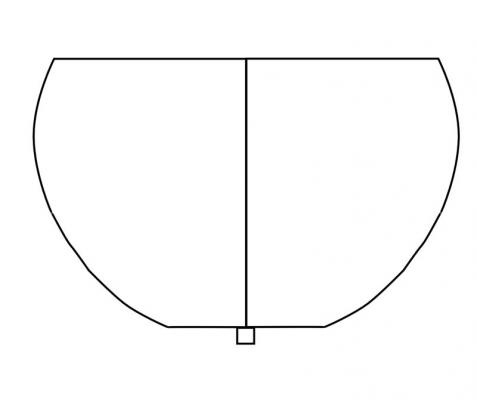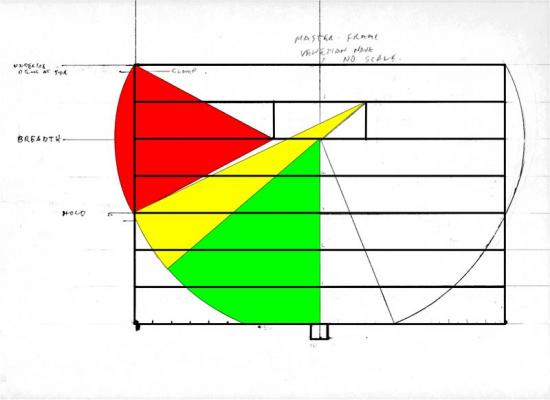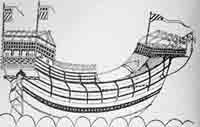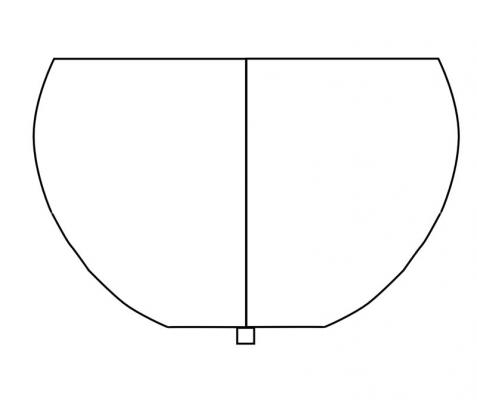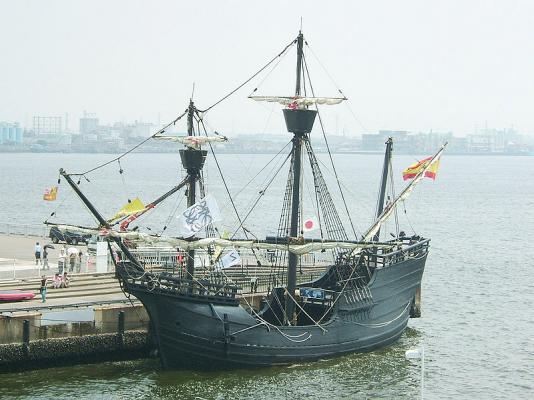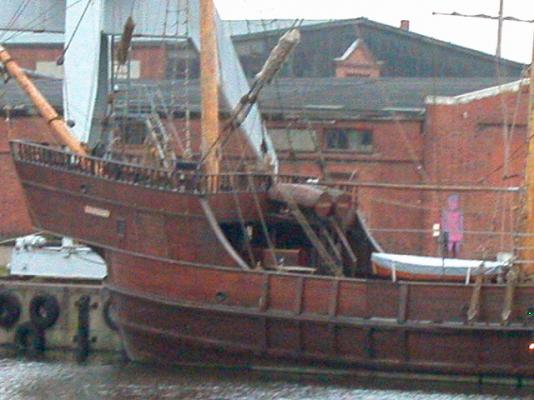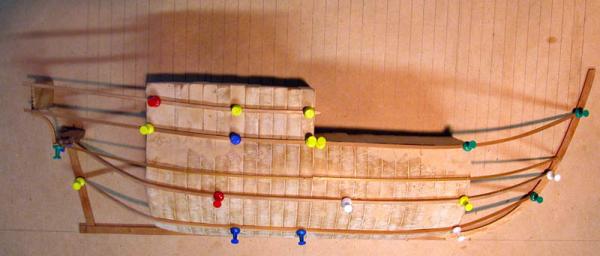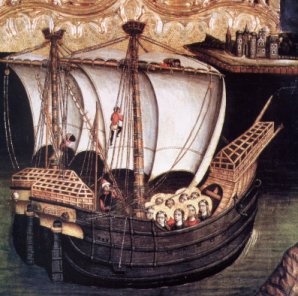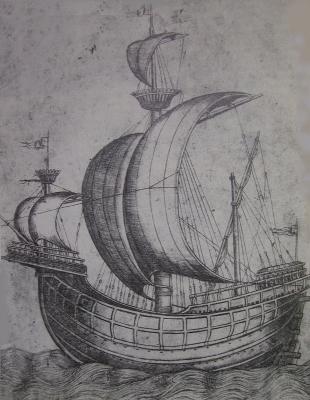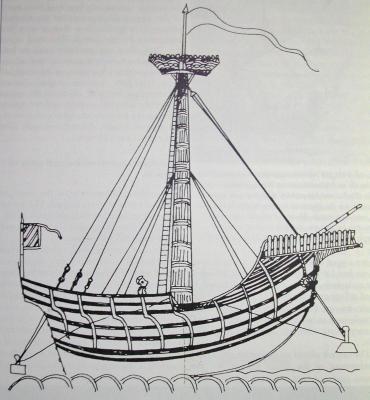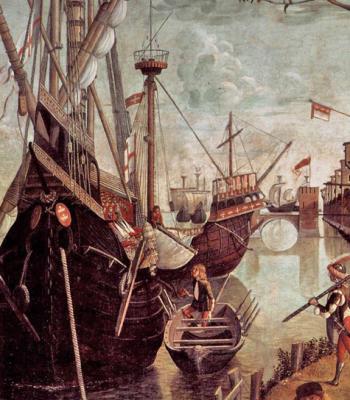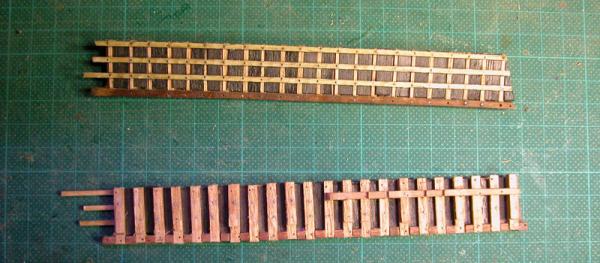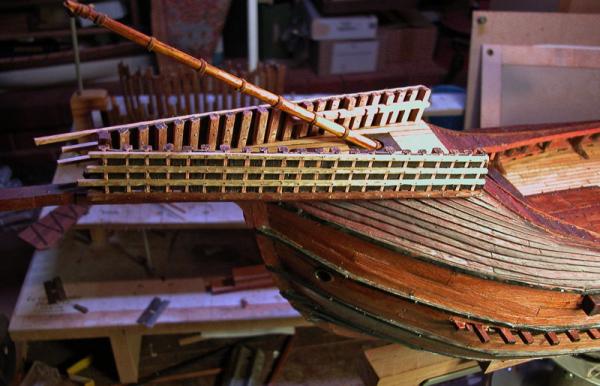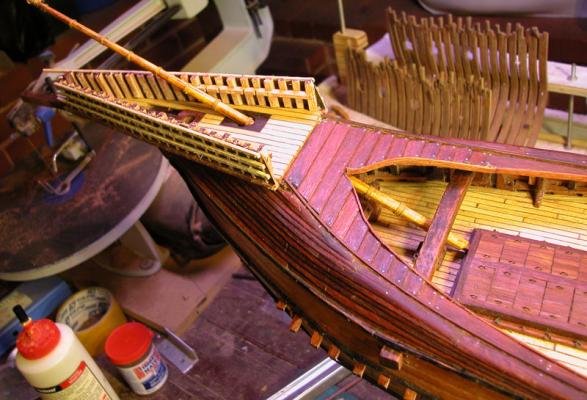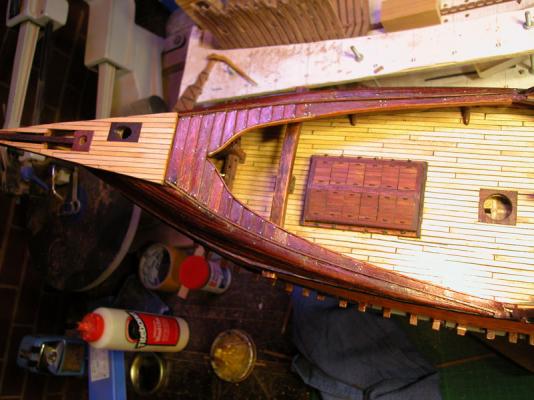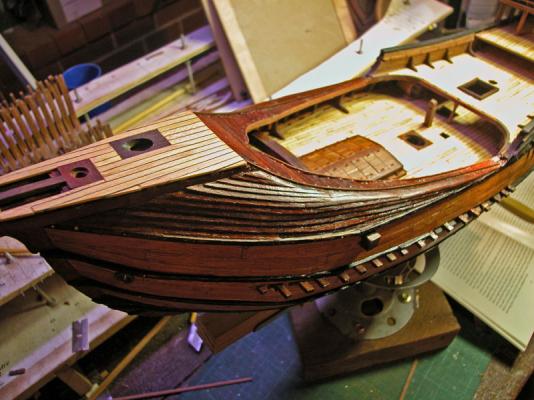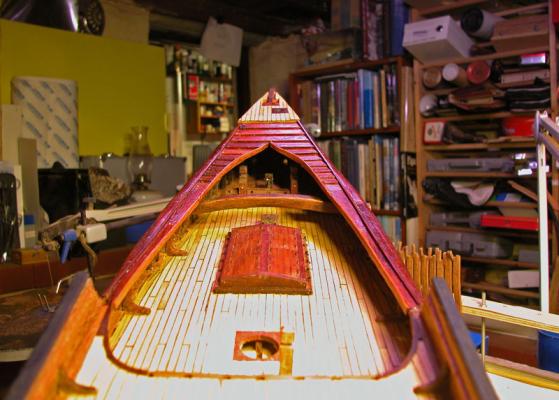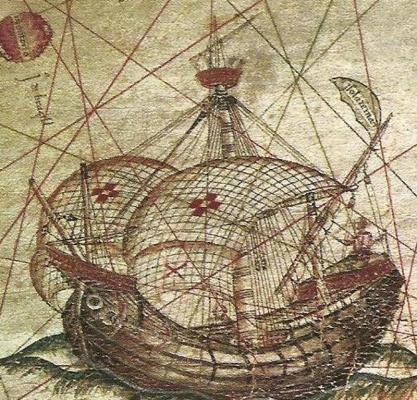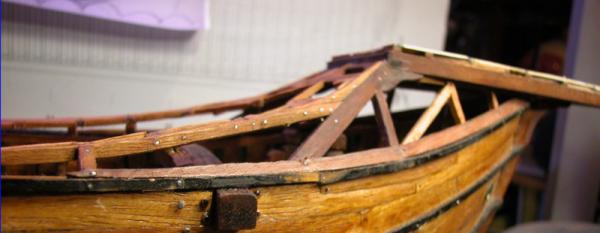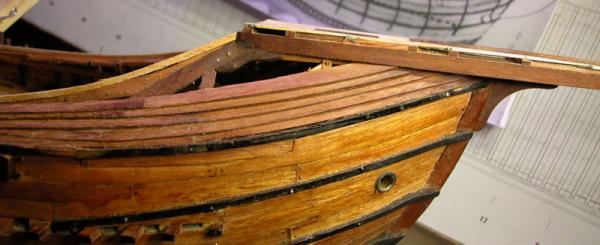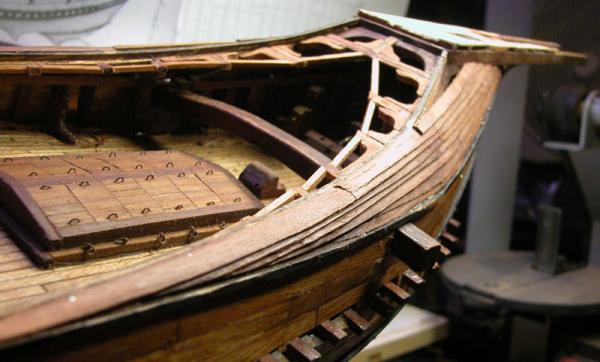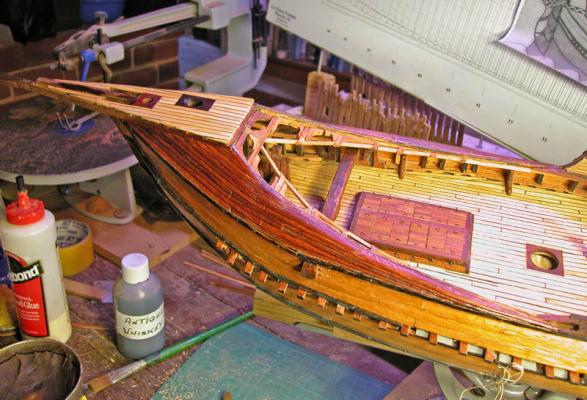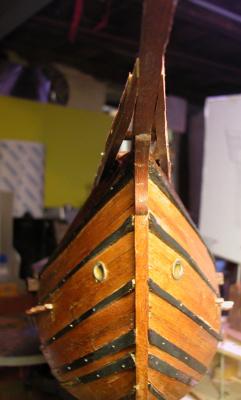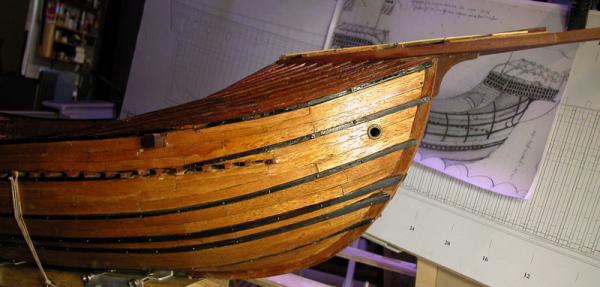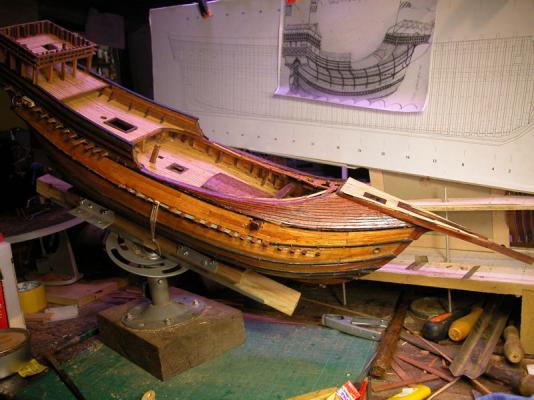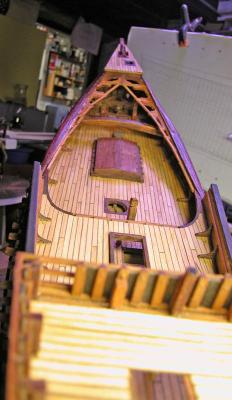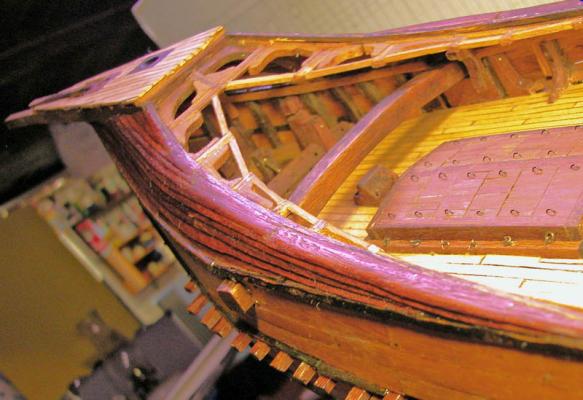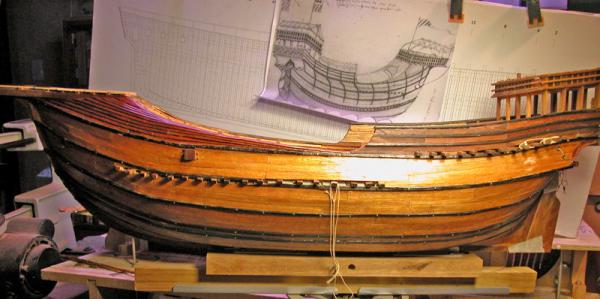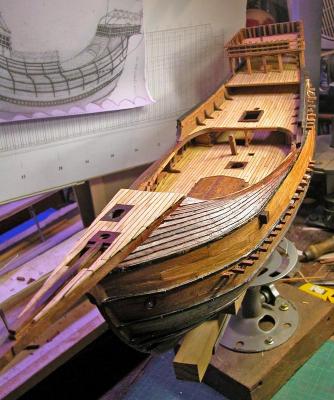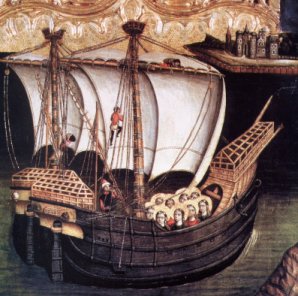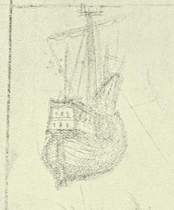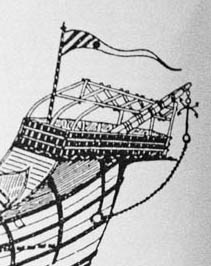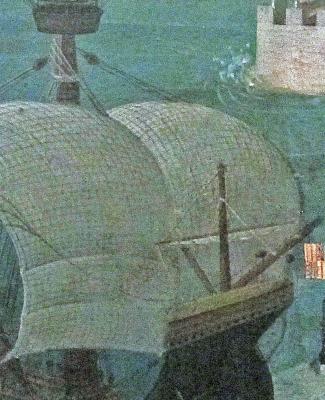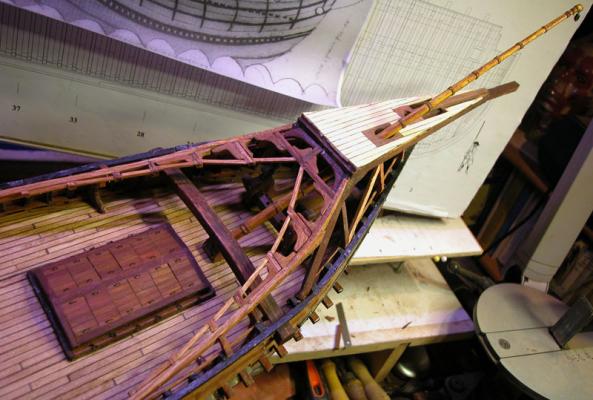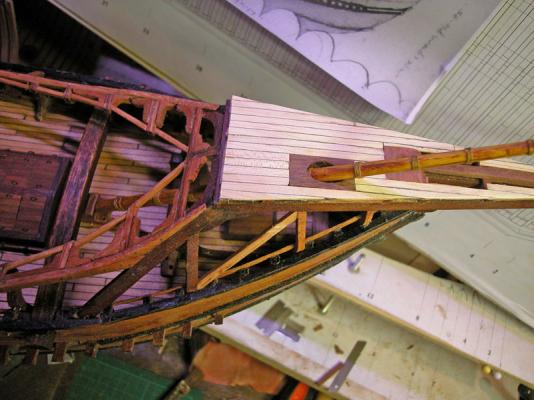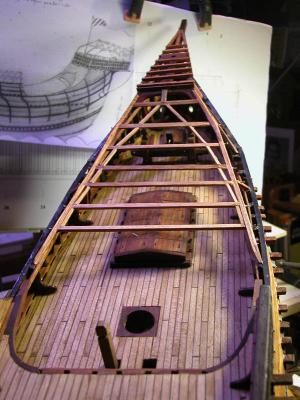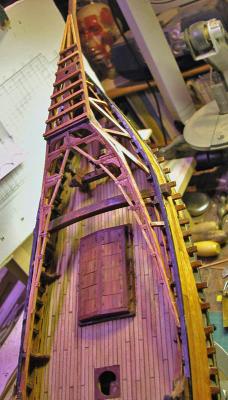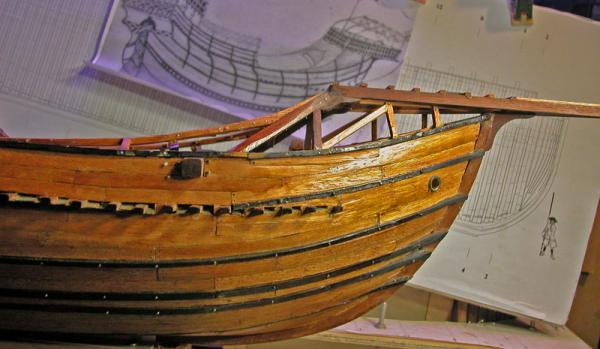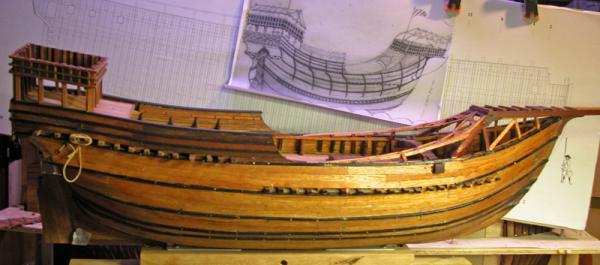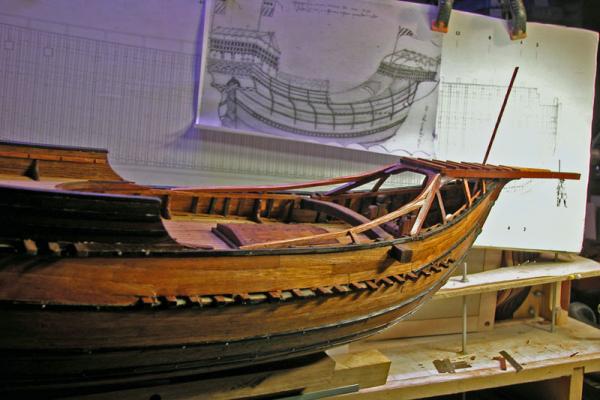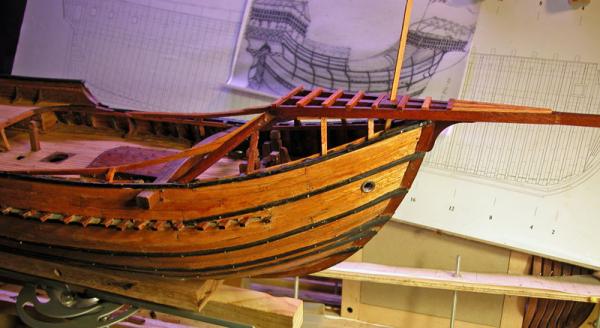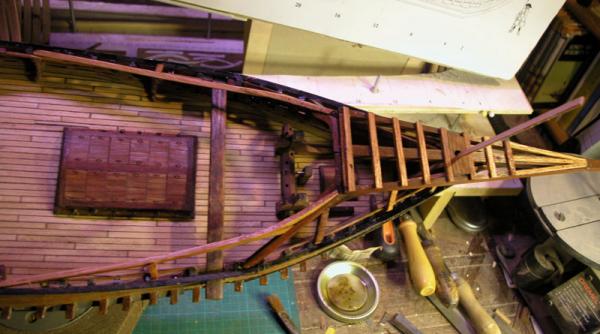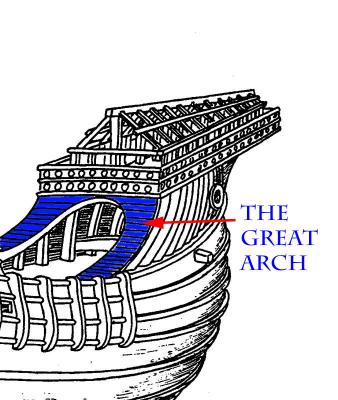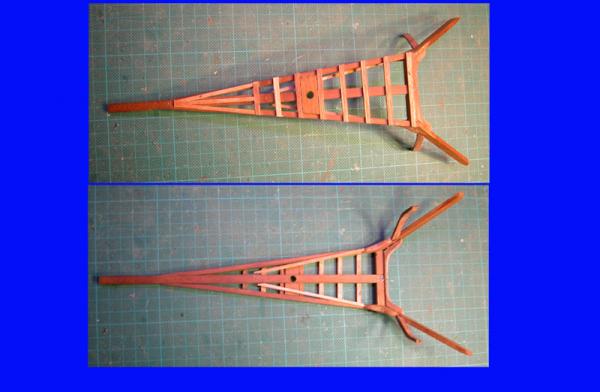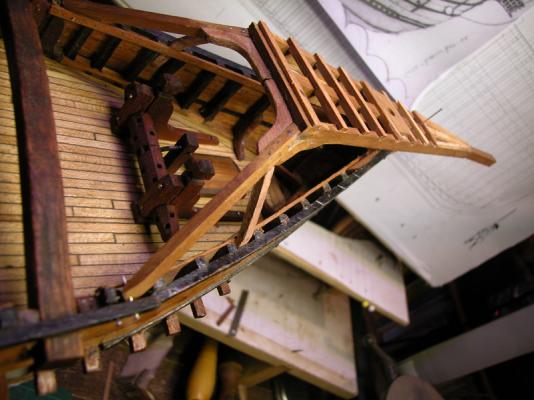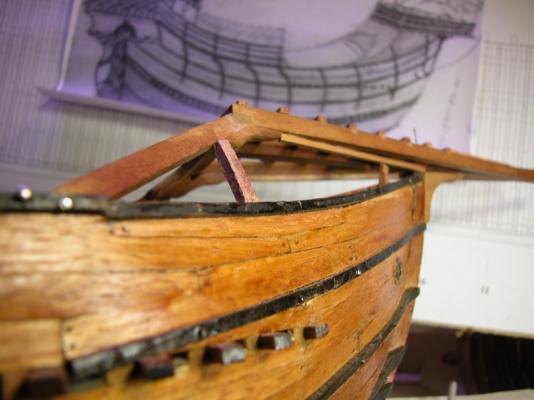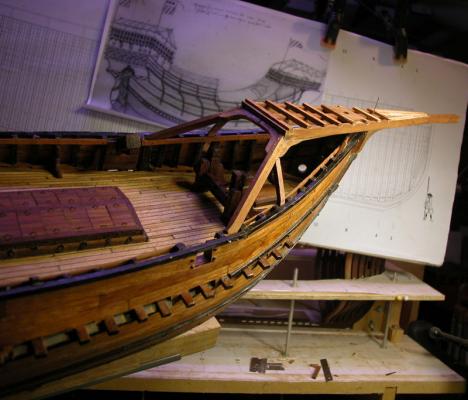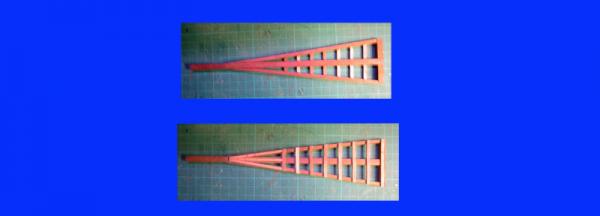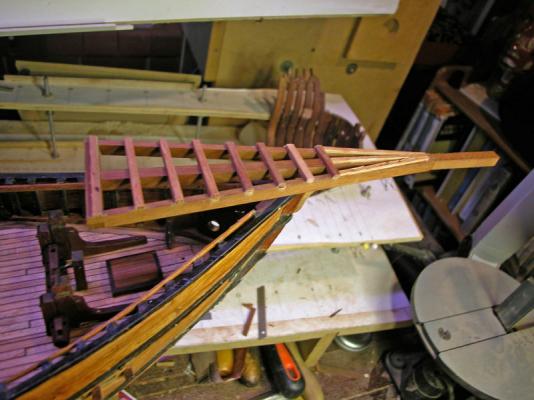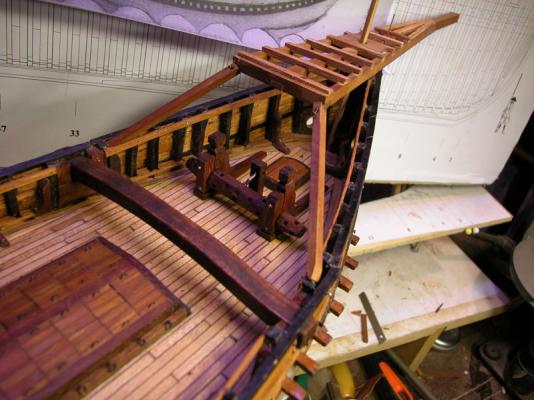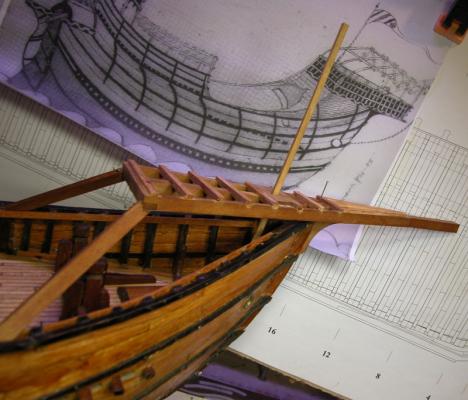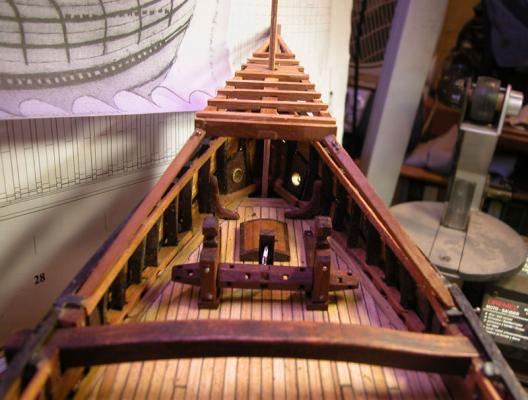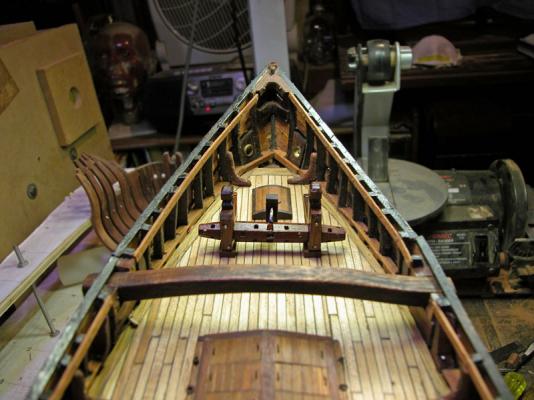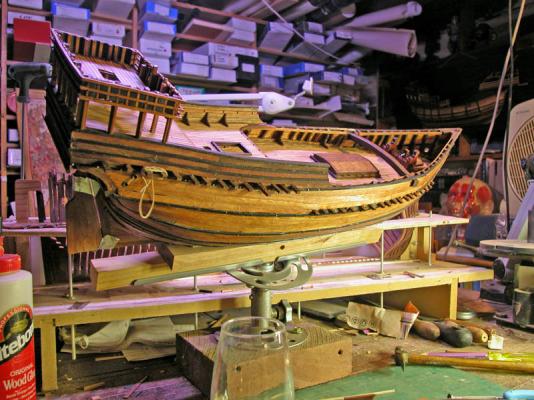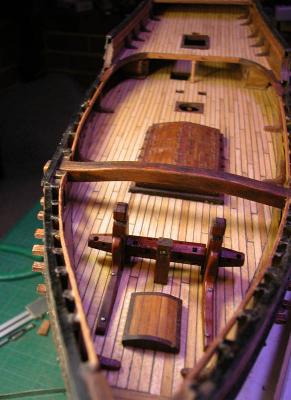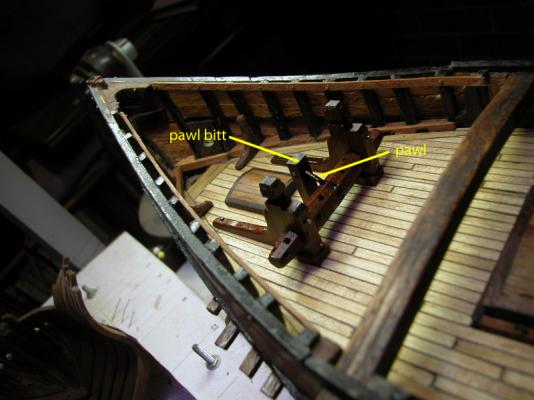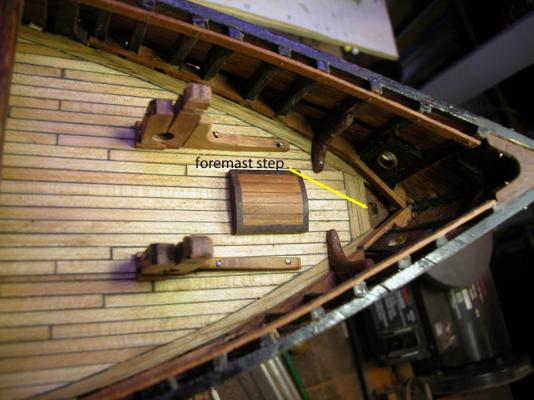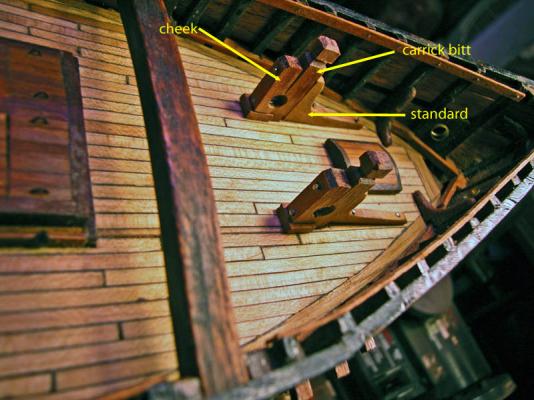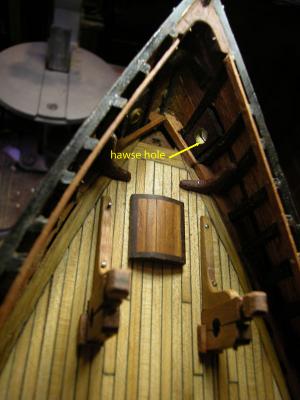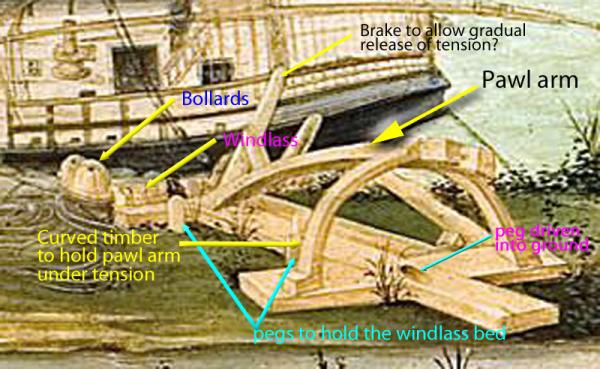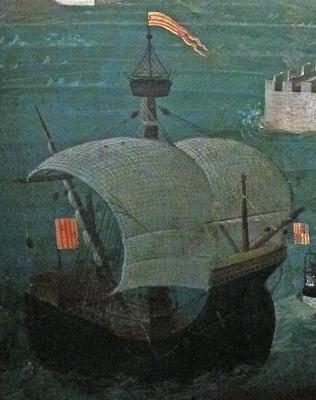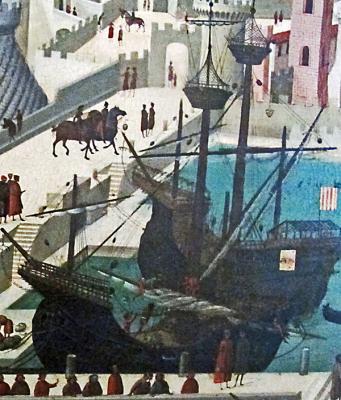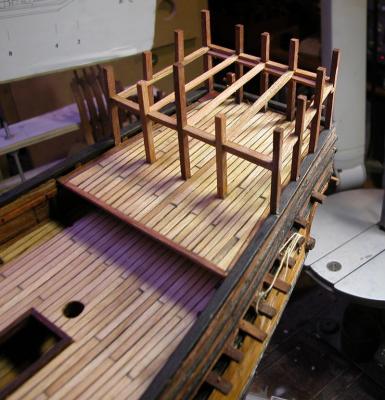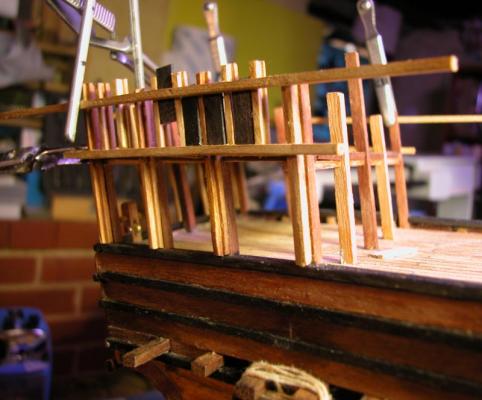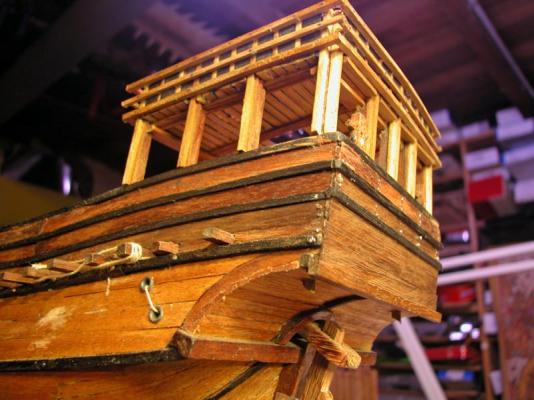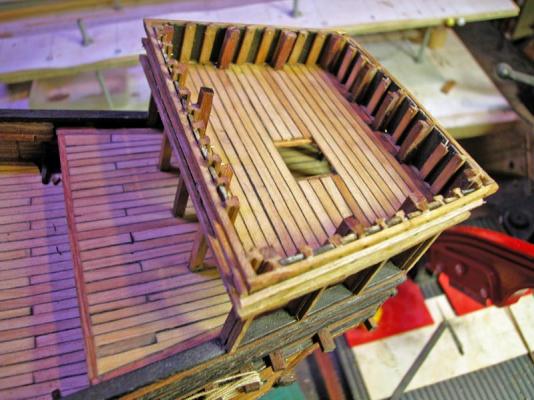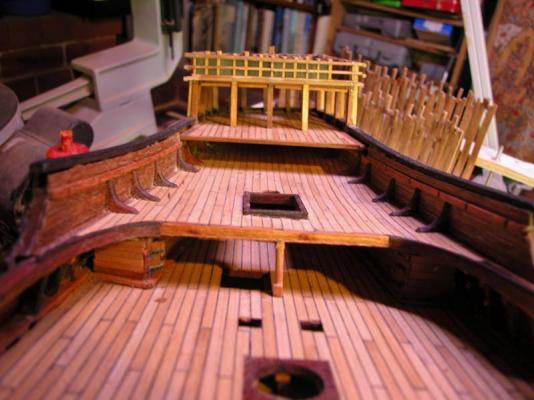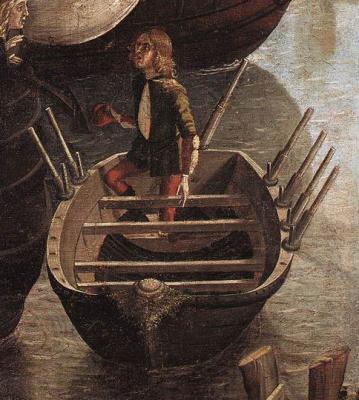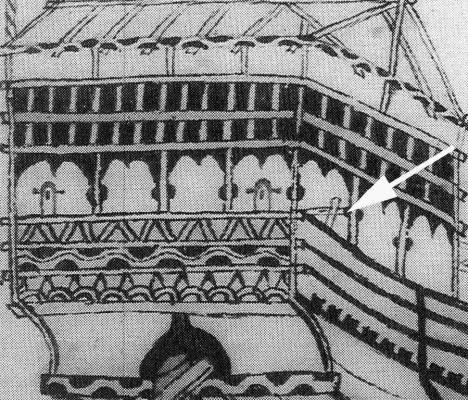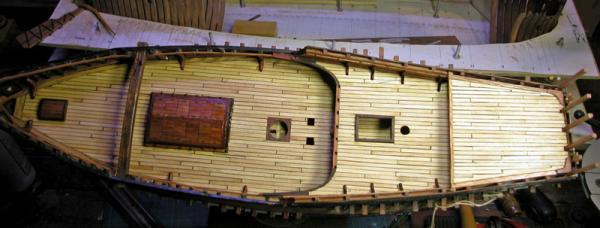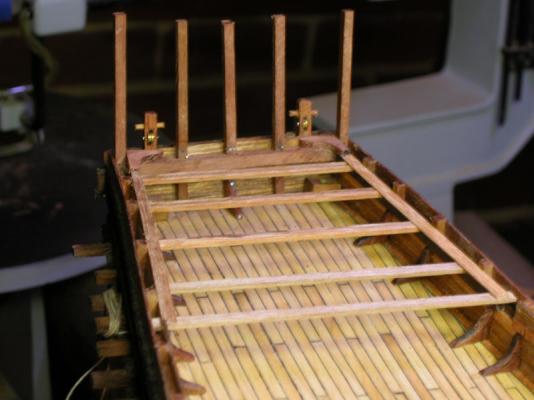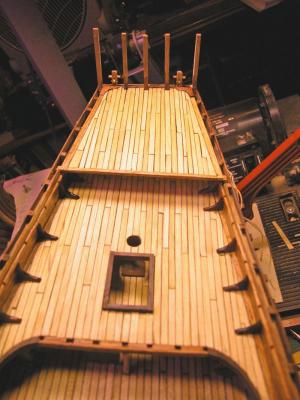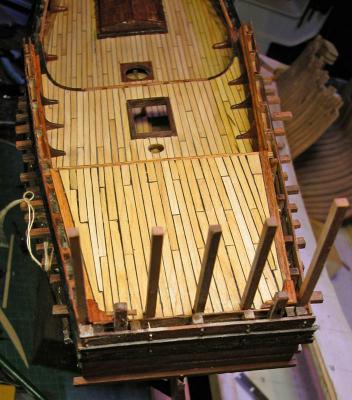-
Posts
784 -
Joined
-
Last visited
Content Type
Profiles
Forums
Gallery
Events
Everything posted by woodrat
-
I have added the external support frames or futtock riders. These were used to add rigidity to these relatively lightly built hulls and were a characteristic feature of these vessels. They were, however, very variable in their application, size, position and number. This vessel has these supports along its full length. Looks like a carrack now, I think. Dick
-
How could I mind, George. welcome aboard. Steven, lovely pictures of the Matthew, a beautiful reconstruction (not a replica!) but what in heaven's name is that eighteenth century topsail doing above the mainyard! :Oh well, needs must! Not much tumblehome either. Interesting. Note the chafing gear on the mainstay which is secured to the stem-knee through the forecastle deck. The cavalaire-sur-mer wreck Note the resemblance of this masterframe to my Trombetta masterframe (details below) Dick
-
Thanks Nenad M and Steven. Steven, I have given a lot of thought to this and I am sure that there was a large range of hull forms in use throughout the Mediterranean, not to mention northern Europe during the fifteenth century. I am sure the regional differences were large. As you say, iconographic information is of limited reliability with some exceptions, such as Carpaccio, and we need archaeological hard evidence. However, that said, I should point out that my reconstruction is of a particular ship and should not be regarded as a generic carrack. The Trombetta illustration, to my eye, indicated a finer entry into the water than many other illustrations show: One of the reasons for this may be the shape of the master frame which I developed based on almost contemporary evidence: This is in complete contrast to the U-shaped frames favoured by some of the northern european reconstructors of carracks e.g. this "replica" of the Nao Victoria which looks remarkably tubby: and this carrack from Lubeck: Using the technique of ribbands based on master frame and tail frames which I used to simulate the method of the mediterranean shipwrights of the time: I came up inevitably with somewhat finer lines. I do not claim my reconstruction is anything more than an amateurs essay at a somewhat hazy subject and I insist that all errors are mine and I treasure them. I agree that some iconography suggests that at least some venetian navi were finer in their lines and I attach a few examples: Note the variation in the hull shapes Another carrack from the Trombetta manuscript Whether experts agree or not, in the end I like the shape of my hull and probably that is all that counts as it has to sit on my mantelpiece Dick
-
Thank you Cap'n BoB, John and steven. These pics show the clinker planking of the "great arch". These are the planks that the sailors would run along to gain access to the forecastle deck and the foremast. There seems to be not much protection to the sailors. Perhaps a 'lifeline' was rigged in rough weather to prevent losses overside! Dick
-
Yes, Steven, the narrowness worried me. Anything wider in this very large ship may have been unwieldy or even unstable, hence the tumblehome. The drawing seems to show a tumblehome here. Dick The forestay ropes are seen well in the Tavola Strozzi, are presumably lashed together in their mid portion and separated at either end
-
Thank you Vivian, Nenad and Steven and Happy New Year. Here are more progress pics of the forecastle. The forecastle may seem narrow but I have followed the original drawing faithfully. This allows a lot of tumblehome for the clinker planking below the forecastle, improves water shedding and looks better. I am sure there was a lot of variation among shipwrights as to forecastle design. Dick
-
This is my interpretation of the fifteenth century Botticelli windlass after due pondering. The windlass would be used to tilt the ship by hauling on the mainmast so as to allow cleaning of the hull and replacement of sacrificial planking. The windlass would have to be able to be moved from place to place and to be held with pegs to the ground. The pawl mechanism would have to be VERY reliable and the cables in good repair. Sudden loss of the tension on the mainmast would be catastrophic! Dick
-
A lovely little picture with a wealth of detail, Steven. Note how the mainyard has been lowered to allow the mainsail to belly out in a fashion never seen in the eighteenth century. They liked their sails "full-bosomed", as it were, in the fifteenth century! As seen below Here is a further pic from same showing an interesting bustle in the waist where the mainsail is undergoing a "harbour-furl" with the yard fully lowered. Look how long the yard is! Merry Xmas from the Woodrat
-
Thanks, Joe from Vegas. Steven, the thing in the foreground is, I believe, a windlass which has been used to pull the ship onto its side for careening via a cable to the mainmast. Please see below for my suggestions as to the function of its parts. Access to the forecastle is by walking up the clinker planks of the great arch. The poop is accessed by ladders. Note the tranverse orientation of the planking in the poop deck which I have also done in the model. Note also the apparently offset deck capstan. This is one of the few illustrations showing deck detail. Dick
About us
Modelshipworld - Advancing Ship Modeling through Research
SSL Secured
Your security is important for us so this Website is SSL-Secured
NRG Mailing Address
Nautical Research Guild
237 South Lincoln Street
Westmont IL, 60559-1917
Model Ship World ® and the MSW logo are Registered Trademarks, and belong to the Nautical Research Guild (United States Patent and Trademark Office: No. 6,929,264 & No. 6,929,274, registered Dec. 20, 2022)
Helpful Links
About the NRG
If you enjoy building ship models that are historically accurate as well as beautiful, then The Nautical Research Guild (NRG) is just right for you.
The Guild is a non-profit educational organization whose mission is to “Advance Ship Modeling Through Research”. We provide support to our members in their efforts to raise the quality of their model ships.
The Nautical Research Guild has published our world-renowned quarterly magazine, The Nautical Research Journal, since 1955. The pages of the Journal are full of articles by accomplished ship modelers who show you how they create those exquisite details on their models, and by maritime historians who show you the correct details to build. The Journal is available in both print and digital editions. Go to the NRG web site (www.thenrg.org) to download a complimentary digital copy of the Journal. The NRG also publishes plan sets, books and compilations of back issues of the Journal and the former Ships in Scale and Model Ship Builder magazines.



